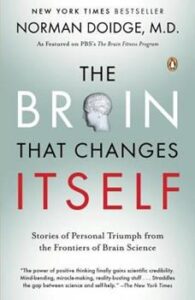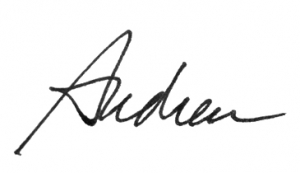
Photo courtesy of Unsplash

Photo by Counselling on Pixabay
We have all heard about people who were either “left-brained” or “right-brained.” In general, the left hemisphere of our brain governs our logical, analytical and objective thinking and the right hemisphere governs creative, emotional, and intuitive thinking. There are great advantages to developing both.
One benefit of using both sides of the brain is that it makes the ability to focus and recall information easier. Also, because of their opposite qualities, as you engage both sides of your brain you will find your mind becoming both more powerful and more peaceful. That means that you might respond with less anxiety, anger or depression. You will start feeling happier and more optimistic.
Another major benefit is that you will develop more holistic insights into people and the workings of the world. Here’s a great example from a very successful ivy league grad I know. When he applied for his freshman year at Princeton he learned that he was expected to take many humanities courses before diving deeper into his engineering major. The university administration simply wanted their students to become well-rounded human beings, not just people who were good at regurgitating facts and data. He felt that his exposure to those other disciplines back in college profoundly impacted the way he approached the development of his award-winning engineering projects.
Synchronizing our Brain Hemispheres

Photo courtesy of Alexandra Lowenthal on Unsplash
There are many ways to balance your brain hemispheres. You may have read that doing crossword puzzles, word games or math exercises will do this. But depending on which side of your brain is dominant, those may simply be reinforcing abilities that you already have. The key is to do something that is challenging, something that requires a new skill.

Photo by Jordan Whitfield on Unsplash
The best skills will require using both sides of the brain. One of the most important developmental skills for a baby is to learn how to crawl, placing one arm and the opposite leg forward, and then repeating the action on the other side. That simple movement engages both brain hemispheres. So consider the various physical exercises one can do that require both sides of the body. Dancing is great for this. Learning to play an instrument is another. Every musical instrument – from keyboards to strings, from wind instruments to percussion – require using both hands, and in the case of pianos and drums, the feet as well!
Speaking of feet, an exercise that both my chiropractor and physical therapist recommend is to stand on your less dominant leg while doing things like washing dishes. Or, try writing with your non-dominant hand. A man I know who has a PhD in Psychology, has also become a fine artist. He often practices drawing by first using his right hand, and then his left.
Other Ways to Balance the Brain

Photo by Los Muertos on Pexels
But yes, puzzles and games will also help synchronize the hemispheres of the brain. Again, pick something that you’re not good at. So if you like word puzzles and games, try a math puzzle instead. Or take up juggling, and start with your non-dominant hand. Or try taking a different route to a destination than your usual one. Or just start singing! If you think you’re not very good at it, all the more reason to do it!
Learning a new language is considered a left-brain activity. But recent research indicates that babies begin learning language by identifying basic sounds. That process of distinguishing the acoustic details of the sound requires engagement of the right brain. So now’s a good time to take that language class or use that series of Italian language DVDs you bought but never opened!

Photo by Darina Belonogova on Pexels
Another method is a “pranayama” breathing technique. (“Prana” in Sanskrit roughly translates to “breath” or life force.) This one is really simple. You just cover one nostril with your thumb and inhale through the other nostril, hold the breath for just a few seconds, then switch; cover the other nostril with your index finger, exhale, and then inhale on the open side, hold that for a few seconds, switch sides, and repeat. You just do this for a few minutes daily.
And of course, meditation is a powerful way to balance the hemispheres of the brain. My own practice is Transcendental Meditation® which I have been doing for 50 year. There is ample research to support that this technique is integrating to all the quadrants of the brain.
Neuroplasticity: Saving our Brain
 This is one of the very hot topics in science these days. “Neuroplasticity” is the brain’s ability to form new neural pathways and connections when we learn something new. It’s a subject that is particularly important for anyone who has had a stroke or who has any form of cognitive impairment. Dr. Norman Doidge wrote a wonderful book about it called The Brain That Changes Itself.
This is one of the very hot topics in science these days. “Neuroplasticity” is the brain’s ability to form new neural pathways and connections when we learn something new. It’s a subject that is particularly important for anyone who has had a stroke or who has any form of cognitive impairment. Dr. Norman Doidge wrote a wonderful book about it called The Brain That Changes Itself.
His numerous case studies describe people who had received pretty hopeless diagnoses after an event that caused them brain damage, but recovered through a variety of forms of sensory input. So practicing any of these brain-balancing games, processes, and skills can deliver ongoing, long-term benefits. They balance the brain hemispheres while at the same time creating those new neural connections. That’s a win-win for both: mind body integration and staying mentally sharp.
We live in a time when the left brain dominates many of our most powerful institutions and the right brain seems to dominate the emotions of the rest of the population. Seems like we could all use some hemisphere balancing!
As the saying goes, use it or lose it.![]()











